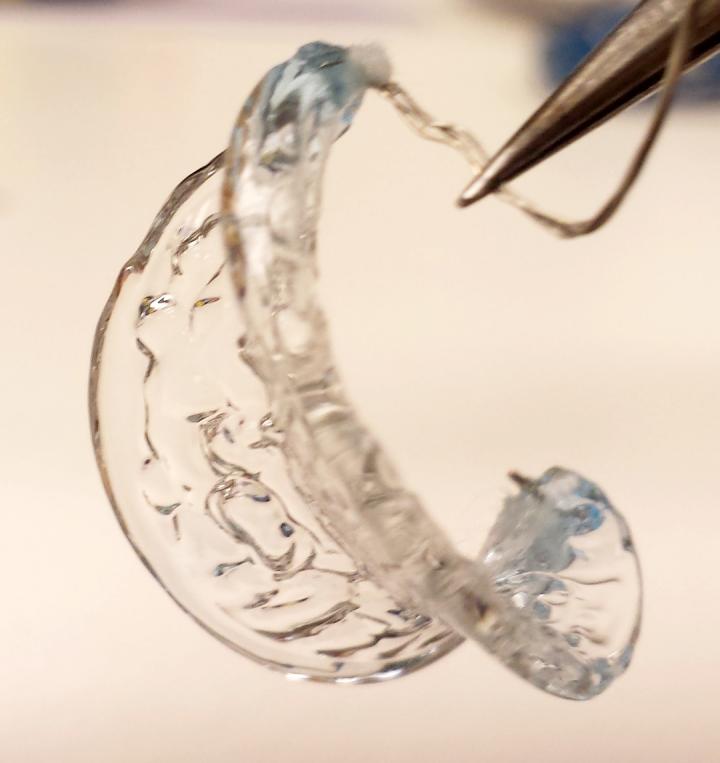
Scientists from NTU and CMU created a leaf-like hydrogel structure through a process similar to how real leaf tissues grow. Credit CMU and NTU
Scientists have created a new hydrogel that closely resembles the properties of real biological tissue.
A team of scientists from Nanyang Technological University, Singapore (NTU Singapore) and Carnegie Mellon University have developed a new technique to direct the growth of hydrogel to mimic plant or animal tissue structures and shapes, which could be used as tissue engineering and soft robotics where hydrogels are commonly used.
In nature, plant or animal tissues are formed as new biomass is added to existing structures and their shape is the result of different parts of those tissues growing at different rates.
By mimicking this behavior, the researchers showed that through manipulation of oxygen concentration, they could pattern and control the growth rate of hydrogels to create the desired complex 3D shapes.
The researchers also found that higher oxygen concentrations slowed down the cross-linking of chemicals in the hydrogel, inhibiting the growth in that specific area.
Mechanical constraints such as soft wire, or glass substrate which chemically binds with the gel, can also be used to manipulate the self-assembly and formation of hydrogels into complex structures.
The complex organ structures are essential for performing specialized body functions. For example, human’s small intestines are covered with microscopic folds known as villi, which increase the gut’s surface area for more efficient absorption of food nutrients.
The new technique relies on continuous polymerization of monomers inside the porous hydrogel, similar to the process of enlargement and proliferation of living cells in organic tissues.
“Greater control of the growth and self-assembly of hydrogels into complex structures offers a range of possibilities in medical and robotics fields,” professor Subra Suresh, who will be assuming office as the NTU President on Jan. 1, said in a statement. “One field that stands to benefit is tissue engineering, where the goal is to replace damaged biological tissues, such as in knee repairs or in creating artificial livers.”
The study was published in the Proceedings of the National Academy of Sciences of the United States of America.




